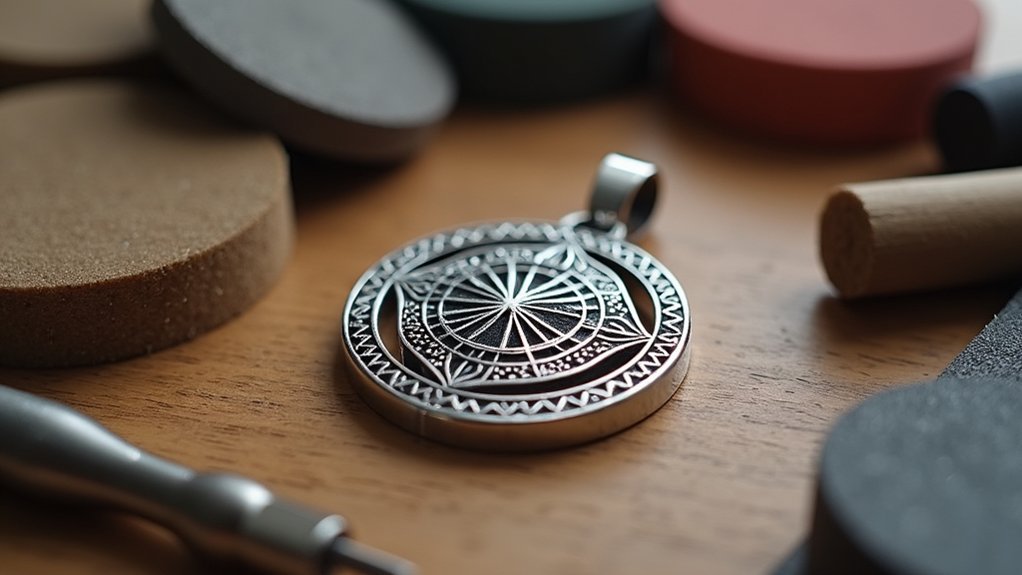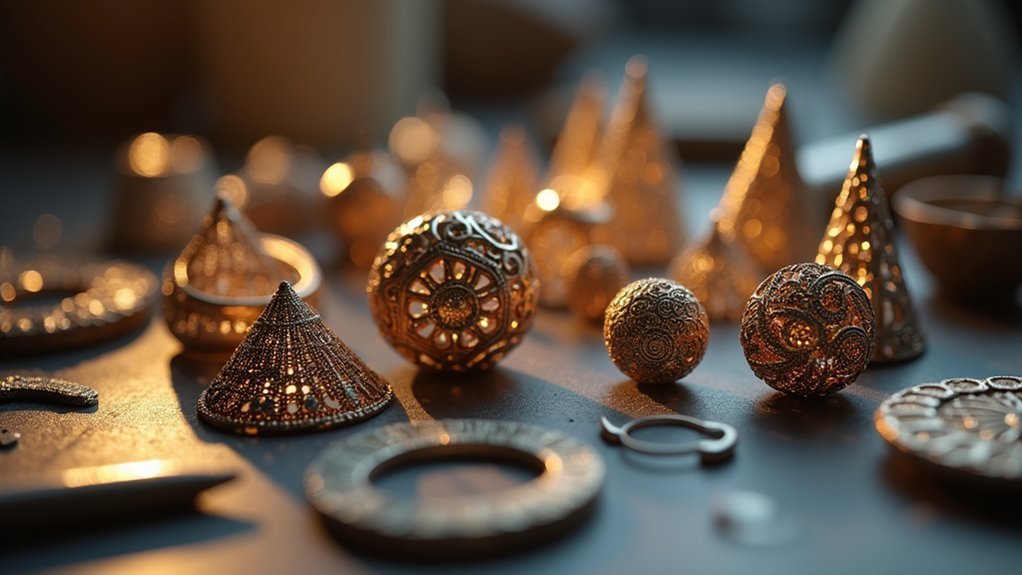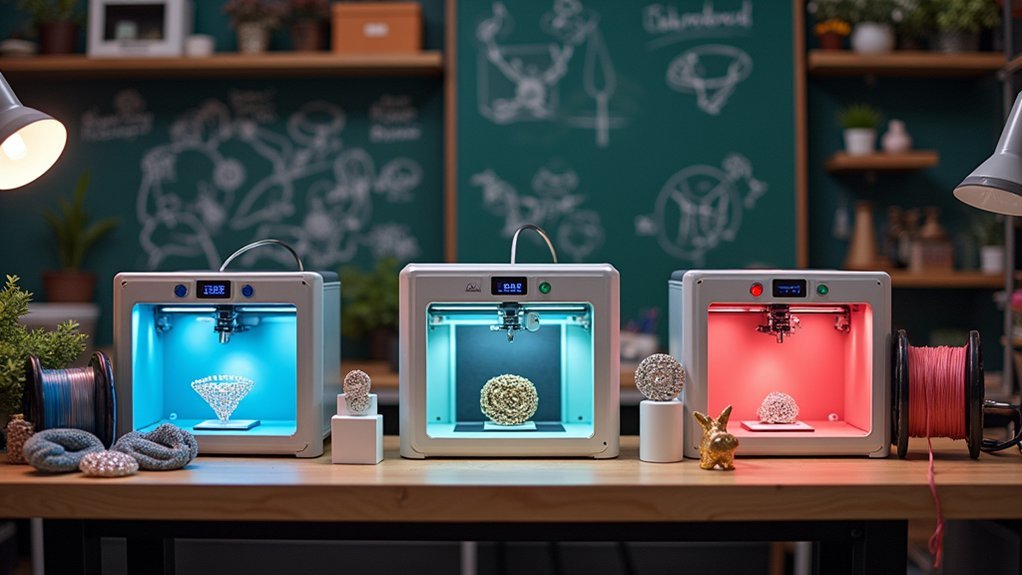You’ll need to maintain minimum wall thickness of 0.6-0.8mm for metals like gold, silver, and brass to guarantee durability. Design with your printer’s resolution limitations in mind—keep decorative features above 0.35mm diameter and structural elements at least 0.8mm thick. Plan for post-processing by incorporating smooth surfaces for polishing, avoiding sharp edges, and including access points for finishing work. These fundamentals will help you create jewelry that’s both printable and beautiful, though mastering each principle requires deeper understanding.
Optimize Wall Thickness and Structural Integrity for Durability

When designing 3D printed jewelry, you’ll need to prioritize wall thickness as your foundation for creating durable, wearable pieces. Maintain a minimum 0.6-0.8mm thickness for gold, silver, bronze, and brass to preserve structural integrity during casting.
For delicate or intricate designs, increase wall thickness to at least 1mm to prevent breakage and enhance durability.
Your jewelry design should incorporate features that distribute stress evenly, eliminating weak points prone to failure. Use material-specific design guides to determine exact thickness requirements, as these vary considerably between different metals and finishes.
When working with castable resin for metal jewelry production, conduct thorough quality checks throughout the printing process. Verify that wall thickness meets specifications and overall structural integrity supports long-term wearability of your final piece.
Design With Print Resolution and Detail Size Limitations in Mind
Understanding your printer’s resolution capabilities becomes critical as you move from structural considerations to fine detail work in jewelry design.
When you’re planning printed jewelry, you must respect specific size limitations to guarantee successful outcomes. Your small decorative features need a minimum diameter of 0.35 mm and height of at least 0.4 mm to survive the casting process without breaking. For structural elements like rods, you’ll need at least 0.8 mm diameter to maintain structural integrity throughout printing.
Resin 3D printing excels at jewelry 3D printing when you work within these constraints. You can create intricate designs by maintaining minimum wall thickness between 0.6-0.8 mm for metals like gold and silver.
Plan for Post-Processing and Finishing Techniques During Design Phase

While fine details define your jewelry’s visual appeal, successful 3D printed pieces require careful consideration of post-processing needs during the initial design phase.
When printing jewelry, you’ll need to incorporate thicker walls and structural elements to enhance durability, as finishing techniques often reveal weaknesses in thin sections.
Design surfaces with sufficient area for sanding and polishing without compromising your piece’s shape. Avoid sharp edges that complicate post-processing, and include strategic access points for applying paints or coatings.
You must account for appropriate tolerances during the design phase to compensate for material shrinkage and visible layer lines.
Planning for post-processing from the start guarantees your finished jewelry achieves professional-quality results.
Frequently Asked Questions
What Metals Cannot Be 3D Printed?
You can’t 3D print pure gold, platinum, certain high-temperature alloys, many stainless steel grades, reactive metals like magnesium and lithium, or non-castable metals due to technical limitations and safety concerns.
How Long Does It Take to 3D Print Jewelry?
You’ll spend 1-8 hours printing depending on your design’s complexity and size. Simple pieces finish quickly, while intricate designs take longer. Don’t forget post-processing adds several more hours for cleaning and polishing.
Can PLA Be Used for Jewelry?
You can use PLA for lightweight jewelry like earrings and pendants. It’s easy to work with and customizable through sanding and painting, though it’s not suitable for high-durability pieces.
What Am I Not Allowed to 3D Print?
You can’t 3D print weapons, illegal drugs, copyrighted designs, unapproved medical devices, counterfeit goods, stalking devices, or hate symbols. These items violate legal restrictions, safety regulations, intellectual property rights, and service guidelines.
In Summary
You’ll create stunning 3D printed jewelry by focusing on these three fundamentals. Don’t overlook wall thickness—it’s vital for pieces that’ll last. Remember your printer’s limitations when designing intricate details, and always plan your finishing process from the start. These aren’t just technical requirements; they’re the foundation for professional-quality jewelry. Master these basics, and you’ll transform your digital designs into beautiful, durable pieces that clients will treasure.




Leave a Reply